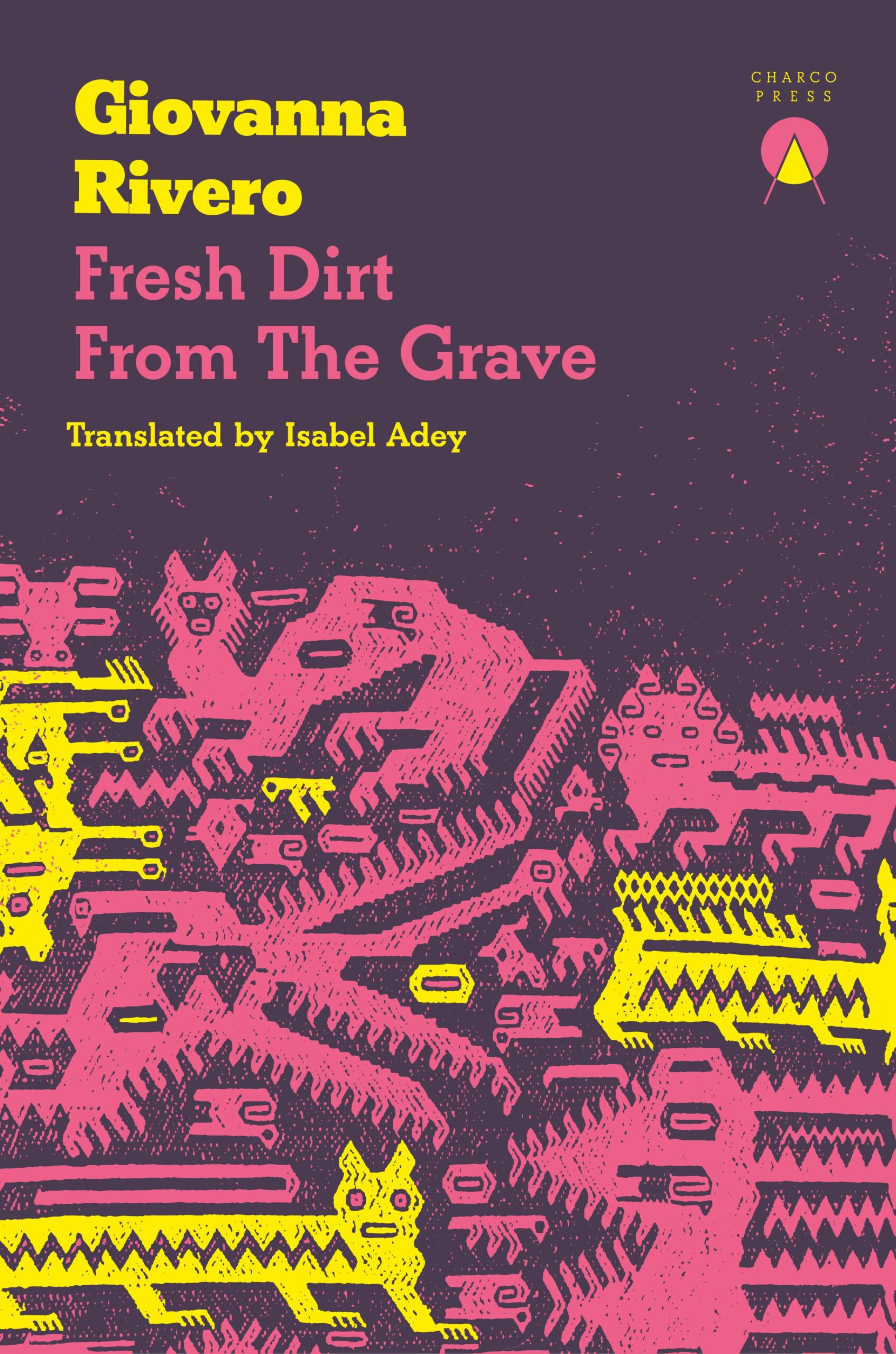The Horror of the Quotidian
Reviews
By Sam Krieg
Giovanna Rivero is a Bolivian author currently residing in Florida. She writes across several genres, including novel, short story, and children’s literature. She has been winner of and finalist for numerous prizes across the Hispanic world. Now, more than twenty years into her writing career, her first book-length work is appearing in English, courtesy of translator Isabel Adey and Charco Press. Although Bolivia isn’t known for horror literature, what we have in Fresh Dirt from the Grave are five examples of the genre specific to the Bolivian context.
Rivero has used her home country as a setting in other works. For example, 98 segundos sin sombra (2014; also forthcoming from Charco Press) is a deep dive into national politics, informing readers about late Bolivian Marxism and its awkward existence within the consumer-centric twenty-first century. In Fresh Dirt from the Grave, however, Rivero highlights immigrant/transient communities rather than Bolivia’s overarching culture. Its stories explore the many cultures and languages that exist within Bolivia—and that Bolivians inhabit across the world.
For example, the frame of “Fish, Turtle, Vulture” is a dinner time conversation in a small coastal home, but the narrator’s mind frequently drifts to flashbacks set at sea. The protagonist of “It Looks Human When It Rains” is a Japanese immigrant to Bolivia, while “Socorro” and “Donkey Skin” focus on Bolivian characters who have immigrated to the USA and Canada, respectively. (Nadine, the protagonist of “Donkey Skin,” is also the daughter of a French immigrant to Bolivia.)
“Blessed are the Meek,” meanwhile, centers on a Bolivian Mennonite community so insular that most residents don’t even speak Spanish. It appears to be inspired by the same Mennonite sexual abuse crime wave that inspired Miriam Toews’s Women Talking (2019) and its subsequent film adaptation. Between 2005-2009, more than 100 women at the Mennonite colony of Manitoba were drugged and sexually assaulted by male members of their community. While Women Talking is narrated by a male observer, Rivero’s fictional account takes us inside the confused and angry mind of one of the victims: “She [Elise Lowen] can’t trust her memories, and yet still she feels the stinger splitting her chest open and a black gale rushing through her, tearing her like a length of cloth, from end to end, with no chance of being stitched together again.” Instead of multiple voices musing over the religious implications of their actions, Rivero provides a revenge retelling of these tragic events.
But what makes these horror stories? Their horrific elements are neither excessively gory nor supernatural. Instead, the horror resides (although sometimes dormant) within the quotidian: a routine fishing trip washes boats out to sea (“Fish, Turtle, Vulture”), a veterinary drug is weaponized by sexual predators (“Blessed are the Meek”), and festivals devolve into violence (“Donkey Skin”).
Moreover, Bolivia is literally and figuratively the grave for many of Rivero’s characters. Yet Bolivia is never presented as a curse. Rather, Bolivia serves as a reminder that we cannot outrun our sins. In each story, fresh dirt is piled on top of each protagonist, whether in Bolivia or elsewhere. In this book’s world(s), death is cyclical, a release—sometimes for the dying, at other times for the survivors. This circularity is more than consequential. It is philosophical, and in multiple ways. Bodies are committed to the ground both to satisfy the Andean goddess Pachamama and to balance cosmic scales of justice. This cycle is unending—the dirt on the grave is constantly refreshed, always dug up by another shovel.
Despite its not being as horror-inspired as the other stories presented in Fresh Dirt from the Grave, “Brother Deer” is one of the collection’s finest. It is told from the perspective of a Bolivian immigrant and doctoral candidate at Cornell University watching her husband deteriorate during an experimental clinical trial. The story straddles the line between science fiction and body horror, which is similar to Rivero’s previous work in Para comerte mejor (The Better to Eat You With, 2015).
Adey’s translation captures the tension present in Rivero’s original. These are stories of discomfort (both emotional and physical), and Adey guides us effectively through the temporal jumps, digressions, and blurred contours that accompany hardship. Here is how Adey renders the description Amador, the protagonist of “Fish, Turtle, Vulture,” offers of being pushed to the brink of dehydration and starvation. “The sea was roaring, as if that monster was hungry too. That was what was going through my head. We’re all hungry, I thought. And I imagined all of humanity opening its mouth wide and the void gushing out from its throat like a volcano of acidic lava. I was going crazy.”
More of Rivero’s fiction deserves to be translated in the future. She, along with others, such as fellow Bolivian cuentista/editora Liliana Colanzi, is taking twenty-first-century Andean narrative to the stars as well as into the mind’s twisted depths. In the meantime, Fresh Dirt from the Grave is a strong introduction to one of South America’s most prolific and innovative voices.
Sam Krieg is a translator living in North Carolina. His work has appeared in International Poetry Review, Dieciocho, Ometeca, South Atlantic Review, and elsewhere.
More Reviews

